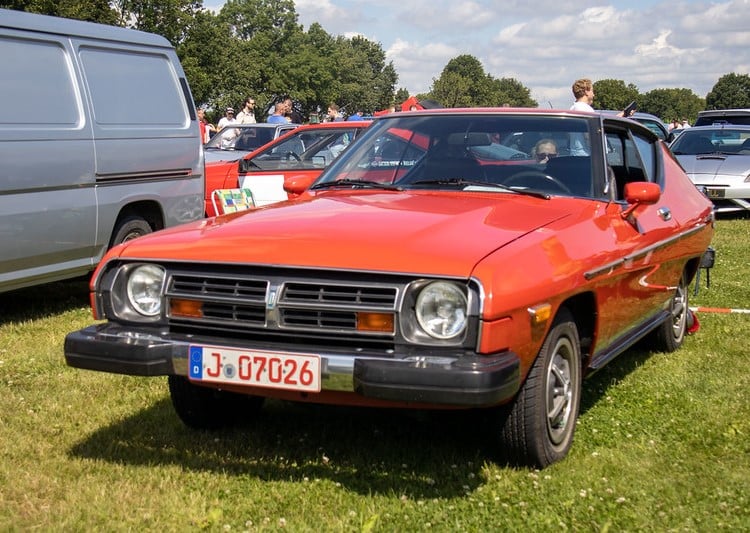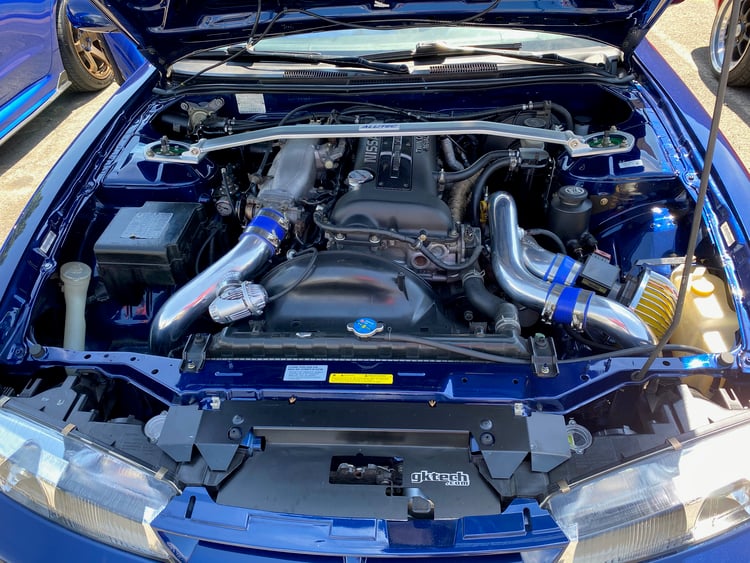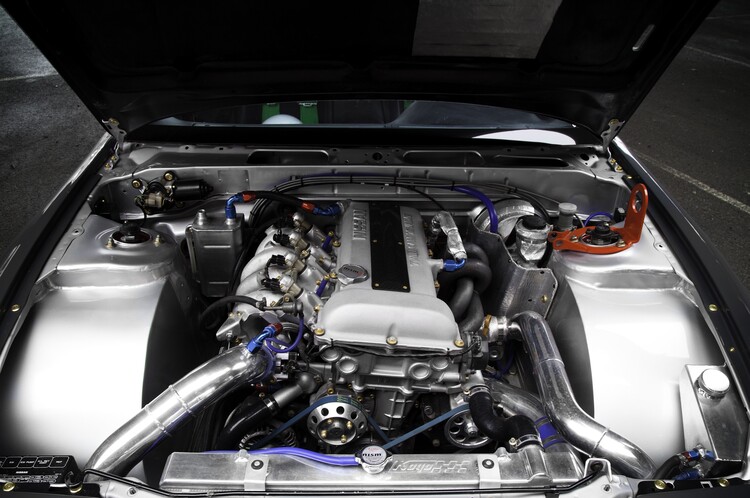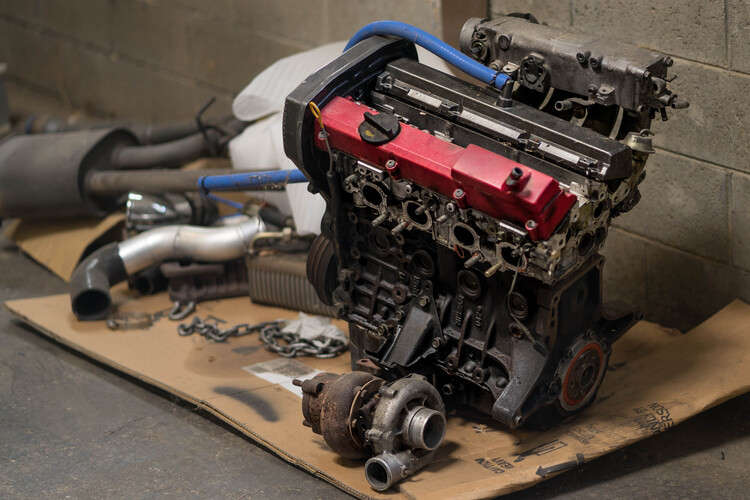S13 Coupe – The Perfect Silvia?
JDM fanboys will forever argue whether the coupé or hatch makes for the ultimate Silvia. We check out what the legendary coupe has to offer in this guide.

Jump To Section
Introduction
The late ’80s and early ’90s were the years Nissan was taking steps towards its peak of engineering capabilities; with the Nissan S models, the Japanese Domestic Market saw a new sporty competitor, here to make everyone fall in love with the timeless design and potential to satisfy petrolheads in the world.
With an elegant, simple-looking design, the S13 coupe model (mainly 240SX and not the hatchback) also incorporated great handling capabilities with modest power but surely enough to keep the driver wanting to do more.
Stock, the 240SX was able to get to great speeds due to its lightweight chassis design, which is worthy of mentioning and is greatly applauded by the enthusiasts of the car world. Moreover, the drifting ability and potential of the Nissan S13 was the main reason that got everyone attracted to it.
Origin/Roots Of Nissan’s S13 Coupe
It all began with a name inspired by Roman and Greek mythology: Silva. Originally, this was the name given to Nissan’s mid-1960s deluxe sports coupe. Because just 554 were ever created, it’s fair to bet you’ve never seen one.

You may find additional info on the internet, but this isn’t the legendary drift vehicle we’re talking about.
The initial Silvia CSP311 was discontinued in 1968, and the name was assigned to another Nissan, the Silvia S10, which was built in 1979.
The S11 and S110, often known as the 200SX, followed.
Nissan released the S12 in 1983. In select areas, such as Australia, the S12 was marketed as the Gazelle. However, in the United States, the 200SX nametag was carried over from the S10 through the S11 and S110.
The first generation of the S13 was the 240SX, which came with a Naturally aspirated 4-cylinder 3 valve per cylinder 2.4L SOHC KA24E engine. The manufacturing of the S13 was started by Nissan Motors in 1988 at its facility in Kanda Fukuoka, Japan, and continued till 1999.
Keep this fact in mind that the 2.4L came only in the American variant of the S13. Because the S13 was available in Japan with the 1.8-liter CA18DE (naturally aspirated) and CA18DET (turbocharged) engines, the S13 hatchback was known as the 180SX in Japan.
Make sure you check out our guide for differences between the CA18DET and the SR20DET if you’re confused.

The 2.4L KA24E produced 140HP and a torque of 206 Nm and was equipped with four-wheel disc brakes. The S13 also received multiple upgrades in 1991. The S13 coupé, by this time, had already started to get famous in the drifting world.
With its drift popularity in mind, Nissan upgraded the engine with 4 valves per cylinder, added a new cylinder head, and the teardrop shape of the wheels was changed with a better 7-spoke polished aluminum design, which consequently improved the brake cooling.
You may call the S13 a Silvia, a 180SX, a 200SX, a 240SX, or even a Sil-Eighty, but all of these designations refer to the same car. The only significant distinction between these models, whether coupe, convertible, or hatchback, is their headlights, taillights, and engine.

The nose of the S13 coupé was also improved to aid in aerodynamic efficiency. The cherry on top; was Nissan, alongside the fresh upgrades, which also introduced an optional special sports package that included a limited slip-differential and a four-wheel steering system.
A 240SX has four distinct engines: the KA24E, which has 140 horsepower and 152 ft/lbs of torque; the KA24DE, which has 155 hp and 160 ft/lbs of torque; the SR20DET red top, which has 205 hp and 204 ft/lbs of torque; and the SR20DET black top, which has up to 250 hp and is very tuner friendly.
Obviously, more power is always preferable, but any of these engines will suffice for getting your car sliding sideway – the lower-powered variants will just require a little pedal-to-the-metal action!
The S13 Coupe’s Potential For A Drift Build
The Nissan 240SX has been widely regarded as a legend in the drift world. In America, the Nissan 240SX is the closest model to the Silvia; however, it is equipped with the less popular KA24DE engine used in select Nissan Xterras, Frontiers, and Altimas. This 155 hp engine is less powerful and heavier due to its iron construction.

The other engine that the Silvia uses is an aluminum turbo SR20DET engine, which provides greater power while being lighter (205 to 250 hp depending on the model).
Because the SR20DET slots directly into the 240SX without requiring major changes, 240SX owners frequently swap out the engines. Plus, you can easily swap out the turbo for a bigger one!
Perfectly suited for drifting purposes, the Silvia was a front engine, rear-wheel drive, a powerful vehicle with a manual transmission, and a near 50/50 weight distribution figure; the S13 Coupe became a go-to if you wanted to build a drift car.
The S13 240SX weighs little more than 2,600 pounds, with weight divided around 53 percent to the front and 47 percent to the rear. Having somewhat extra weight up front makes any vehicle more prone to oversteering, which may be beneficial for newbies who will begin drifting at slower speeds.
Furthermore, the 240SX S13 Coupe isn’t that expensive to acquire. Many sellers worldwide are selling the car at a relatively cheap price ($2k – $3k), depending on the condition. Moreover, the aftermarket parts for the S13 are also mediocrely priced so that you could tinker around with different upgrades. This makes it another favorable candidate for a building project.
The core reason for the great drift potential is the S chassis. It is lightweight, has great weight distribution, has aftermarket support, and has handling capabilities that drifters worldwide appreciate.

Along with the great chassis, another requirement for a good drift car is a powerful engine which the Silvia also had. Originally featuring the CA18DET making 167 hp and 168 lb-ft of torque, the S13 went sideways from the factory like it was nothing. The limited-slip differential also facilitated drifting by causing the car to oversteer.
Later, the engine became even more powerful when the S13 started using the SR20DET, which made 202hp and 202 lb-ft of torque. This turbocharged, inline four-cylinder engine was capable of much more than that.
With the proper upgrades, you could easily be driving around in a supercar killer that also likes to go sideways from time to time.
The Silvia also incorporates the use of MacPherson struts in the front and a multi-link suspension in the rear to complete an independent suspension system, making it easy to control, maneuver, and handle the vehicle.
All you need to set up a drifting 240SX S13 Silvia are simple, bolt-on suspension upgrades, like a quality coilover system, a camber kit, and an upgraded sway bar to keep the car’s rear end a little loose. This would also help in initiating the drifts.
The tension rods, tie rods, and toe links could also be upgraded to better-quality parts to eliminate unwanted damage to your car and ensure durability and strength.
Alongside the suspension upgrades, we recommend getting good tires, as they remain one of the most important factors during drifting. This would probably also be one of your biggest expenses.
There is a general practice of using different tires in the front and rear of the vehicle. Mainly, the tires should be designed for racing; it’s better to ensure that your tires can endure the abuse of drifting.
You can be assured that the tire will wear out evenly with good quality tires. Also, it’s beneficial to get lightweight aftermarket wheels.
Another area that requires attention and is often wrongly ignored is the brakes. Brakes are a very important part of the build that is an easy installation, one might say.
If you want to avoid running into the wall, you should be able to stop the car as effectively as you can accelerate and drift. You should get your hands on some good brake pads, brake rotors, and stainless-steel brake lines.
Or, if you’ve got the cash, you can stump up for an uprated brake kit. We’d recommend upgrading both the fronts and rears at the same time – which can end up being a little costly!

Moving on to the engine of the 240SX, named the KA24E, wasn’t a huge engine with crazy horsepower and torque figures; one could call the engine a bit modest with it being a naturally aspirated, 4-cylinder engine with three valves per cylinder.
While producing 140hp and 152 lb-ft of torque, the Silvia S13 Coupe never makes the driver feel as if it was underpowered. In stock conditions, the car is already pretty good for drifting. Although, you could have a more powerful setup with a few minor (or major, depending on your wallet, honestly).
These upgrades could include various upgraded parts and components; for example, you could start with a simple exhaust system upgrade or an ECU tune.
Another option could be to have a turbocharger installed and move toward a Stage 1 tune which further includes increasing the boost levels of the turbocharger.
The engine can also be swapped out for something better and more powerful with more tuning potential, durability, and strength than the factory engine.
If you’re looking to swap out the KA24 with the SR20, check out our guide to fully build your SR20.
Remember that although the factory engine gives you average mileage, an engine swap, like an LS, is often a consideration.
Many people have opted away from the 2JZ swaps in recent years due to ever-increasing prices, but opting for the N/A 2JZ-GE with an aftermarket turbo kit provides a fantastic alternative at a fraction of the cost.
Or, if you’ve got the skills, why not go for a wild and unique engine swap?
Common Issues With The S13 Coupe
Since the Nissan Silvia S13 is over 30 years old now, it is inevitable that vehicles that have survived up until now experience various mechanical issues.
If the owner of the car maintains it properly and consistently, an S13 or any other automobile would not face major problems that hinder the functionality of the vehicle. However, due to the S13 being an old car, it’s often not easy to review its maintenance history.
Furthermore, if you’re looking to buy a used S13, it would be essential to have it properly examined by a trusted mechanic if you’re not too skilled in the mechanical department; otherwise, you would be harboring a money-sucking machine instead of a car that you should be able to enjoy.
It’s also definitely worth having a poke around in the bodywork. A lot can happen over thirty years, and rust/corrosion issues will always have to be a serious consideration.

Common issues of the used S13 range from electrical to mechanical issues and various leaks to sensor failures. If not maintained properly, the fan clutches can become troublesome in these cars. They tend to be extremely loud and require replacement after some time.
Moreover, the coolant temperature sensor has quite a reputation for failing. It is one of the most common issues in the S13 and often requires replacement. Other issues include worn-out bushings on the subframe, rusting on the frame, and rust being caused due to the spoiler that came installed with the 240sx.
These spoilers would retain water and cause the hatch to rust out slowly. The best remedy is to remove the spoiler to keep it future-proof and prevent this issue.
Additionally, the timing chain can make a rattling sound. This usually happens due to low oil pressures and a stuck or mechanically broken tensioner.
With this information, it is vital to mention that the parts availability of the S13s is pretty good considering the car’s age. Some parts are also interchangeable between the Silvia range, so many of the issues one could face can be fixed.
Apart from available parts, they are quite cheap and affordable. Overall, the Silvia S13 is not a vehicle for which you would have to invest a lot of time and money to find new parts or fix existing problems.
If the car is well maintained and there aren’t major rusting or leaks, you would be looking at a great S13 with a lot of potential to become your prized possession.
Conclusion
The Nissan Silvia S13 Coupe has proved its worth after being praised consistently for its drifting potential, lightweight and perfectly balanced chassis design, good power output, and impressive aftermarket support with the ability to swap out old parts for new ones.

It’s a great contender for a project build, and enthusiasts in the petrol world view this car as one of the best made by Nissan, rather, one of the top vehicles to come out of the Japanese Domestic Market.
With prices showing signs of slowing down, you may need to pay a little more than you’d expect, but a clean example is likely to be a fantastic investment.
With a simple design coupled with low prices of parts and great potential to go sideways, it’s no surprise that the Nissan S13 Coupe is often referred to as the ‘Drift King.’
























